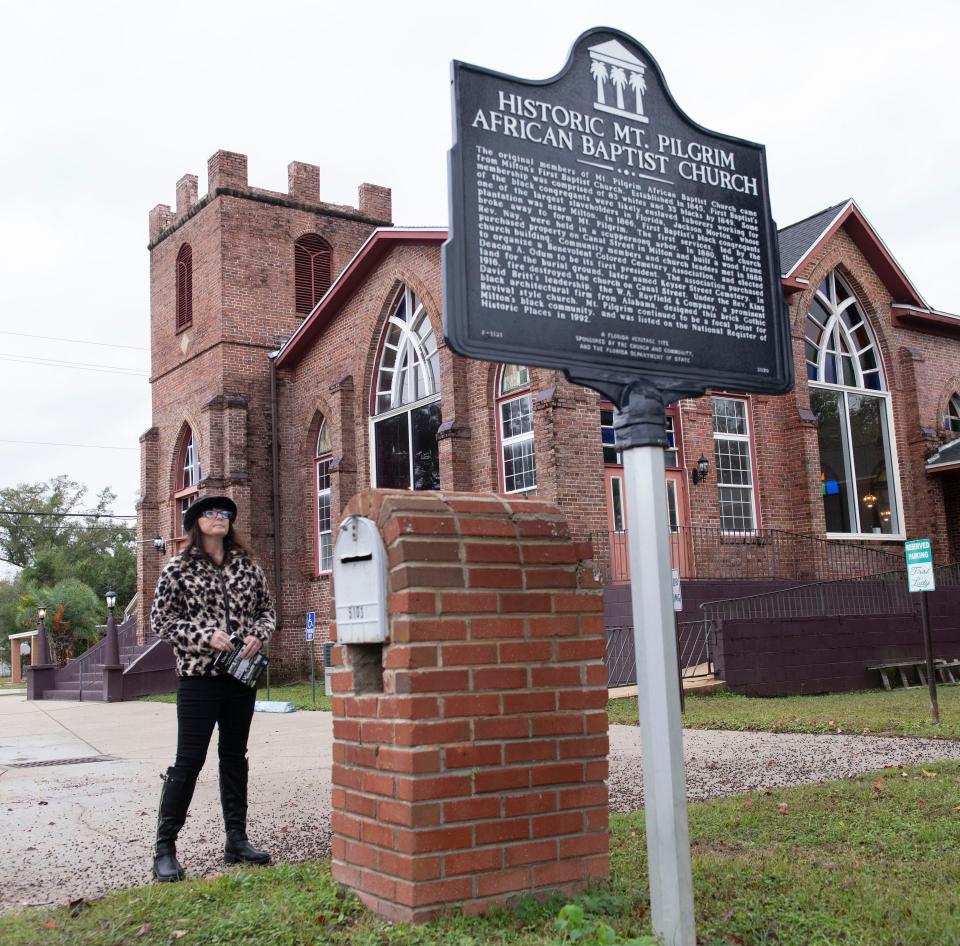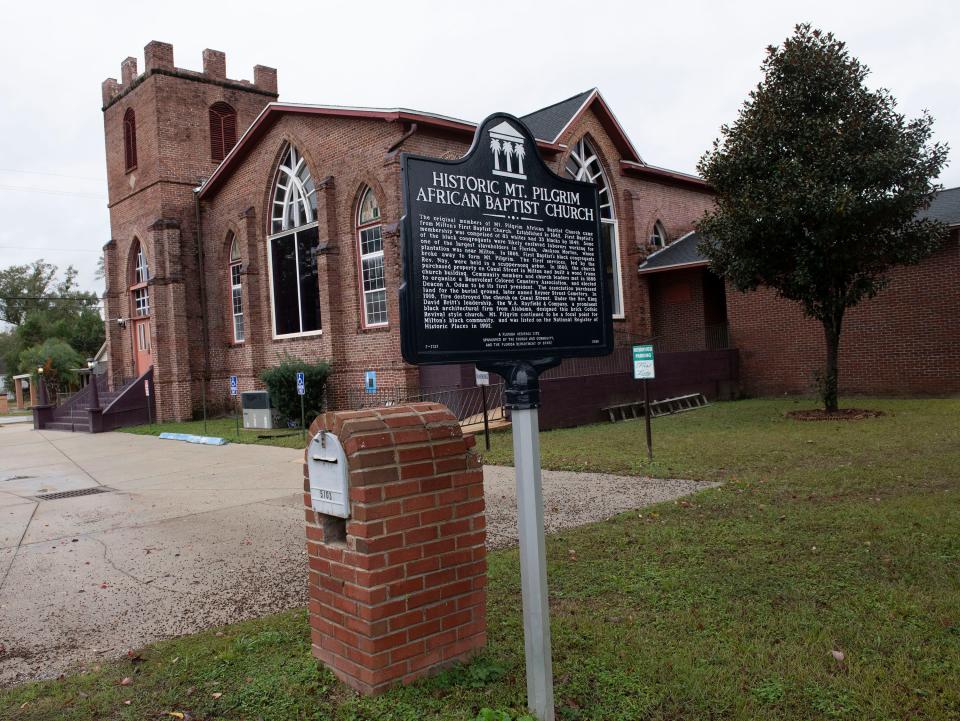36 years later, notable Milton structures will get the recognition they've been denied
Established in 1844, the city of Milton is believed to be among Florida's 10 oldest municipalities, and its citizenry takes great pride in having much of its downtown listed in the National Register of Historic Places.
But in 1987, when the Milton Historic District map was finalized, some notable structures were left outside of the district and therefore not afforded whatever protections, benefits or distinction the 117 buildings included within its boundaries have received over the years.
Supporters of a pair of recently authorized amendments to the city's Unified Development Code believe the tools are now in place to allow historically important sites to be afforded the recognition they deserve by having the designation of local historic resource bestowed upon them.
"I love the city's decision to move forward with this," said former City Councilman Vernon Compton. "To me, living in a city that values its history and historic buildings is a great thing. This is a positive, good thing."
By a 5-2 vote, the Milton City Council decided Nov. 7 to, as city documents state, "create a process for establishing local historic resources." The amendments will be added to the existing code and, following two readings, written into ordinance.
The local historic resource designation could be applied "to any building, property or artifact (within the city limits) that may contain historic value in the community and have their own story that is independent from the nationally recognized Milton Historic District," the document states.

Among the outlying buildings that could benefit from the amended code would be one that now houses the Panhandle Butterfly House and Nature Center at 4966 Henry St.
The historic home served from 1897 until 1951 as the home of Tom "T.W." Jones and his wife, Alice. Jones was a driving force in Milton and Santa Rosa County in the lumber and shipbuilding industries. Over the last couple of years Keep Santa Rosa Beautiful and its Executive Director Pam Murfey have worked diligently to restore the home and the gardens around it to pristine condition.
"We should be" recognized as a historic structure, Murfey said. "We need to be."
Ironically enough, the T.W. Jones home is but a short walk down Henry Street from the historic Milton railroad depot that now houses the West Florida Railroad Museum. The depot/museum is included within the Milton Historic District while the Jones home is not.
The federal historic designation map "basically ends at the railroad tracks," according to Cassandra Sharp, the vice chairwoman of the Milton Historic Preservation Board.
Sharp has been a major advocate for the recently passed Unified Development Code amendments. She chafes at some of the arguments that have been put up by the vocal opponents of the proposition, most of whom, she said, seem to live outside the city limits.
"A lot of the political opposition is coming from people who don't live in Milton," she said.
In recent months, some have argued that creating the local historic resource designation would essentially create a city-wide homeowner's association, or that grant money designated for the Milton Historic District would be funneled to homes outside the district.
"There's nothing in the Unified Development Code wording that has anything to do with grants," Compton said. "There's always a point of discussion, particularly from people outside of Milton, that states, 'Who's going to benefit?' To me, with this, everybody is benefitting."
Sharp contends there's been a great deal of misinformation generated to foster opposition to the amendments.
"It shouldn't have been as confusing as it was," she said. "Some people wanted it that confusing."
Opponents call Milton historic resource designation a "toothless ordinance"
The amendments, while supported by the Historic Preservation Board, were unanimously opposed by the city's Planning Board.
The Planning Board, and most prominently member Jimmy Messick, argued that allowing the Local Historic Resource would do nothing that a city resident couldn't do by seeking state or federal recognition as a historic site.
"To go in and make a separate local designation as being historical is going to diminish, in my perspective, the aspect of being a historic property," Messick said at a Planning Board meeting. "If they meet the historic property designation, let them apply for it at the federal or state level and be designated a historic property."
You may like: St. Mary's Episcopal Church in Milton celebrates 150th anniversary
Nathan Sutrick, who owns a home on Conecuh Street close to, but outside of, the Milton Historic District, said that his residence has been listed on the state register of historic places for years, and he wasn't even aware of it.
"I researched and found the house is listed by the state as a state resource. No one knows that, it's just a list and it offers no protections," he said. "My house is not listed in the Milton Historic District so there are no protections offered. There's no way for a building outside the historic district to be included in the historic district of the city."
In siding with Messick, Planning Board Chairman Tom Powers speculated that the local historic resource designation might at some point be handed out to the owners of aging mobile homes.
"It's a toothless ordinance," Powers said.
As Compton and Sharp are keen to point out, the local historic resource designation is something the owner of a home or artifact, like maybe a historic cemetery, has to apply for. Applying is completely voluntary, and neither the city nor the Historic Preservation Board can nominate or designate a structure.
Also, by offering a property up for consideration as a local historic resources, a homeowner has to commit to retaining a standard not only of historic legitimacy, but also of upkeep and maintenance.
"The homeowner who puts forward time, money, blood, sweat and tears would be allowed to have a structure listed as historically significant in the city," said Sutrick.
Both Sutrick and Compton own homes over 100 years old with a historical story to tell that are outside the existing Milton Historic District. Each said they will look into applying for local historic resources consideration.
Historic African American church among buildings that may seek historic status
Mt. Pilgrim African Missionary Baptist Church serves as another prime example of a building that was left outside the Milton Historic District when the boundaries were established in 1987.
The church was originally built in 1866 on Canal Street as a worship center for African Americans emancipated following the Civil War. After the first building burned down, a second one was built in the 1916 time frame at its current location on a road that has since been renamed in honor of the late Civil Right's activist Martin Luther King Jr.

It is difficult to fathom how such an important historic monument as the Mt. Pilgrim church could have been left out of the Milton Historic District and off of the National Register of Historic Places in 1987, particularly in light of the fact that eight structures on Canal Street, just one block over, were included.
Mary Johnson, who was baptized at Mt. Pilgrim African Missionary Baptist Church and remains its resident historian, said she believes that the church and the predominantly African American community of homes around it were left out of the district intentionally.
Johnson succeeded in getting Mt. Pilgrim independently listed on the National Register of Historic Places in 1992, and Tim Milstead, the city's planning director, confirmed that a short-lived effort to expand the Milton Historic District to include some communities west of Canal Street had ultimately fallen apart.
Johnson said she intends to go get the word out to the neighborhoods around Mt. Pilgrim African Missionary Baptist Church that owners of historic "shotgun homes" to apply for local historic resource status.
"There are a few still left, and we want to preserve that," she said. "I want to send some letters out that say 'please apply for this.' I think there are a few people who will."
This article originally appeared on Pensacola News Journal: Milton adds Local Historic Resource designation to development code

